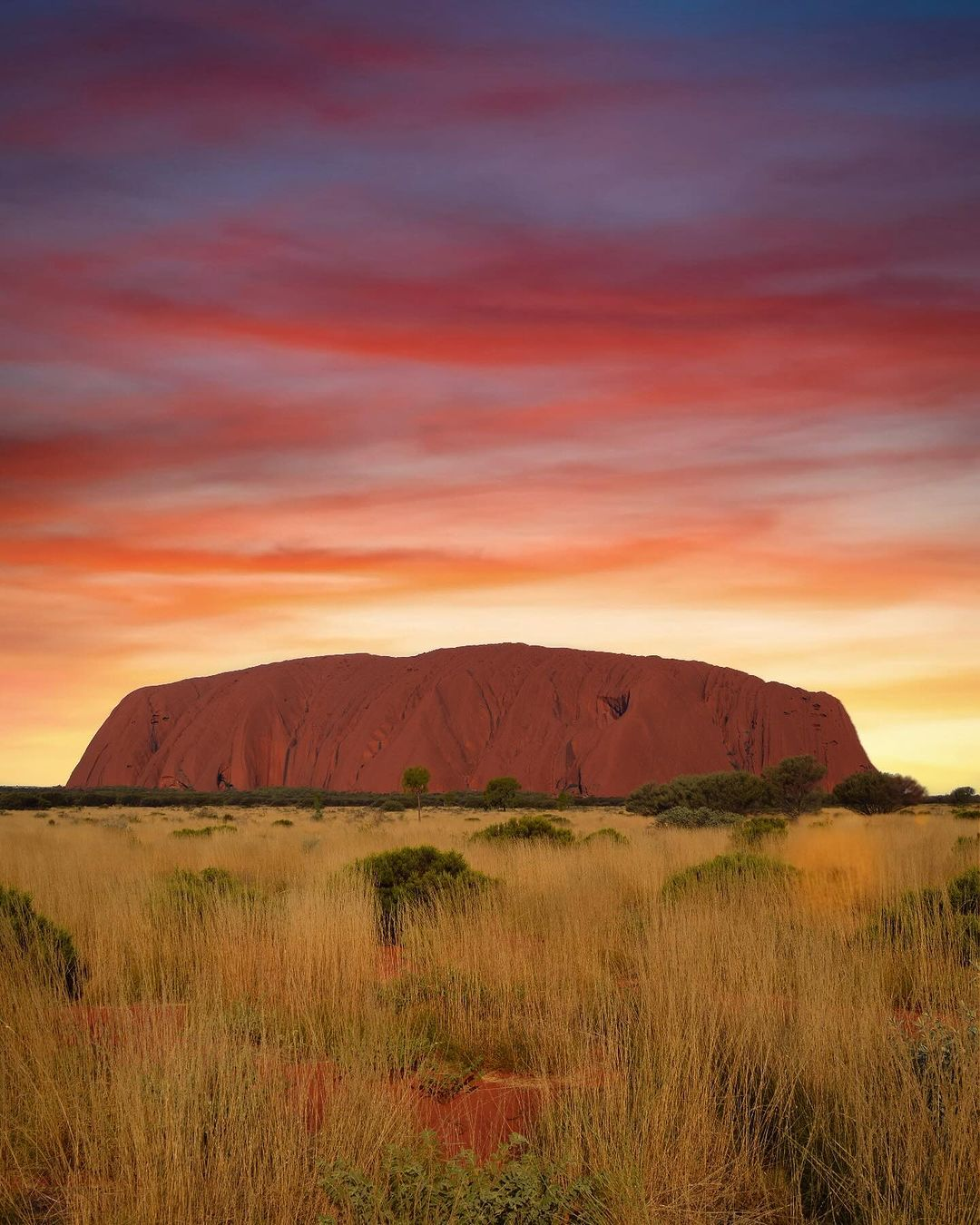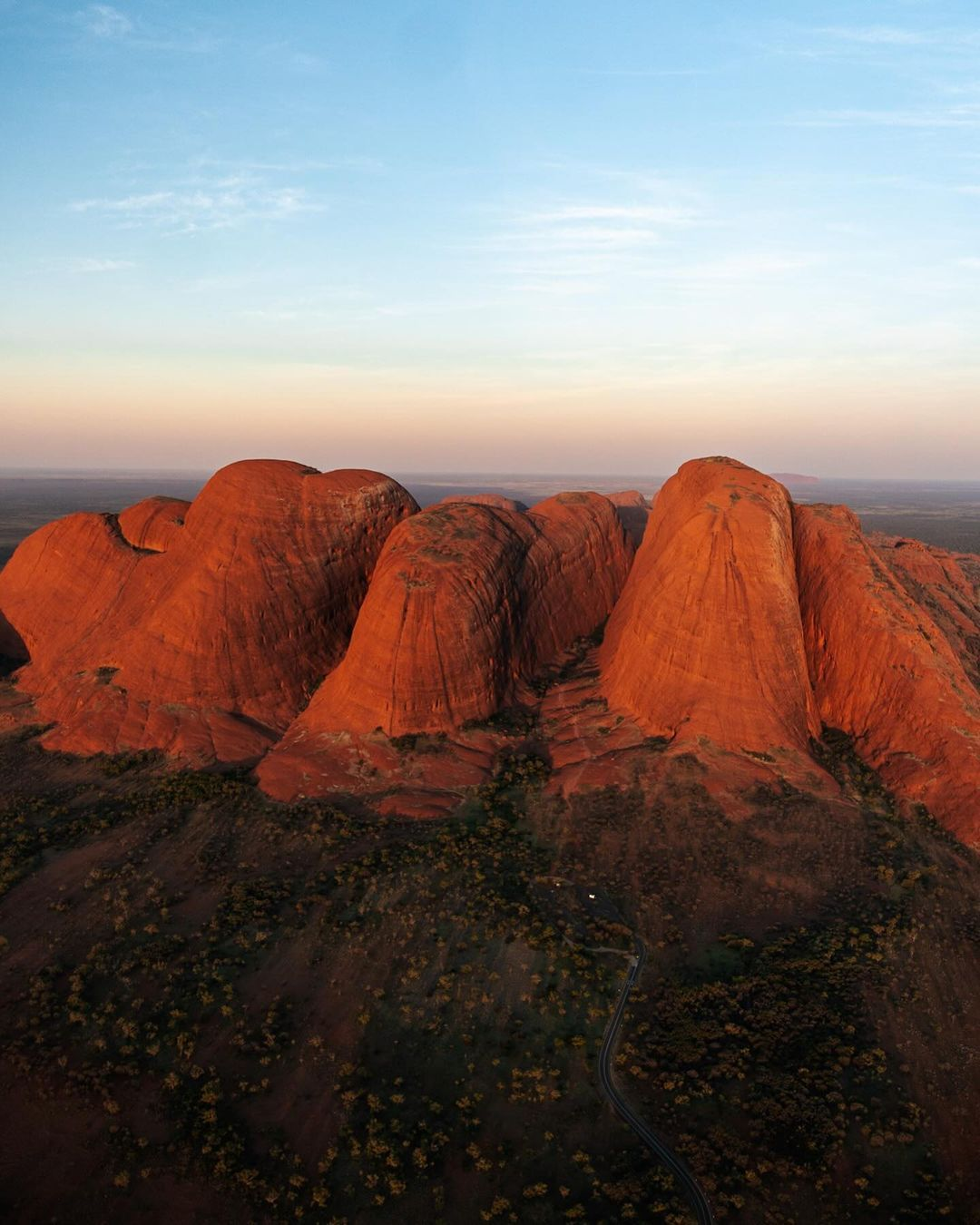Famous for its magnificent red hues and spiritual significance, Uluru is a treasured Australian landmark that beckons travelers from around the globe. Yet, when planning a pilgrimage to this sacred site, discerning the optimal time for a visit is crucial. Visiting Uluru is not merely about admiring its majesty; it’s about immersing oneself in the cultural heartbeat of the land. Balancing the extremes of the desert climate, the cultural responsibilities, and the swells of tourism is key. In essence, the best time largely depends on weather preferences and an intention to engage with the cultural narrative of Uluru. This guide will seamlessly navigate you through the kaleidoscope of seasons to pinpoint the time that will elevate your Uluru tour to an unforgettable experience.
Understanding Uluru’s Cultural Significance

The towering monolith of Uluru is much more than a geological wonder; it’s a cornerstone of cultural and spiritual importance to the Anangu, the traditional owners of the land. A UNESCO World Heritage Site, Uluru is synonymous with ancient history, with rock paintings and indigenous stories deeply etched into every crevice. Visiting at a time that accommodates cultural ceremonies and respects indigenous customs should be a priority for any Uluru tour. Being mindful of these elements can greatly enrich your understanding and experience of this majestic landscape.
Weather Patterns at Uluru: From Scorching Summers to Mild Winters

Summer at Uluru (December to February): The Sweltering Outback
The Australian summer transforms Uluru into an oven with daytime temperatures frequently rising above 35°C (95°F). Though the heat intensifies the striking color contrasts of the landscape, it’s a formidable challenge for visitors. If you’re considering a summer Uluru tour, it’s vital to anticipate the heat by visiting in the early morning or late afternoon, staying hydrated, and protecting yourself from the harsh sun. Despite the discomfort, fewer tourists means more solitude as you explore the Outback’s raw beauty.
Autumn at Uluru (March to May): Balancing Crowds and Climates
As the relentless heat dissipates, autumn ushers in a temperate climate ideal for outdoor explorations. While still warm, the days become increasingly bearable, allowing more time for activities like walking tours around the base of Uluru. However, the milder weather also attracts a growing number of tourists, often coinciding with school holidays. If you’re planning an Uluru tour during this season, be aware that you’ll need to book your travels well in advance to secure your spot amidst the mild desert weather.
Winter at Uluru (June to August): The Peak of Visibility and Comfort
Winter is the high season for Uluru tours, and for good reason. The climate is the most forgiving, with cool mornings, pleasant days, and minimal rainfall. It’s not uncommon to need a warm jacket in the early morning or evening, which is a stark contrast to the sweltering summer months. During this time, activities like hiking and cultural experiences can be thoroughly enjoyed without the oppressive heat. Prepare for increased visitation and remember to book everything from flights to accommodations ahead of time.
Spring at Uluru (September to November): Witnessing the Desert Bloom
Following the cold desert nights, the spring season brings a burst of life to Uluru’s arid surroundings. With the bloom of desert flora and fauna comes a moderate influx of visitors. The early parts of spring offer a sweet spot—less crowding and still refreshing weather conditions. Yet, temperatures will begin to creep up as summer edges closer, so planning your visit around late September to October is a prudent choice when aiming for the best of both worlds.
The Optimal Timing: When Should You Plan Your Pilgrimage to Uluru?
Choosing when to visit Uluru is a personal journey. Your ideal season may not merely hinge on the weather but also on your intentions and flexibility. Below are two helpful numbered lists to aid in your decision-making process:
Top 5 Considerations for Choosing Your Visit Time:
- Local Weather Conditions: Prefer cooler temperatures? Aim for winter. Can handle the heat? Consider summer.
- Cultural Events: Research any ceremonies or events that may impact access and deepen your cultural immersion.
- Tourist Seasons: Are you looking to avoid the crowd, or do you not mind a communal vibe?
- Photography and Sightseeing Goals: Some seasons provide better lighting and clearer skies for photography.
- Flora and Fauna: Interested in seeing Uluru surrounded by wildflowers? Spring is your time.
3 Steps to Booking Your Uluru Tour:
- Determine your preferred travel season based on the above considerations.
- Book your accommodations and tours well in advance, especially if traveling in peak seasons.
- Prepare for the trip by packing appropriate clothing and gear for your chosen season.
To help you visualize the various factors across seasons, here is a helpful table:
| Season | Temperature Range | Visitor Volume | Cultural Considerations |
|---|---|---|---|
| Summer (Dec – Feb) | 20°C – >35°C (68°F – 95°F+) | Lower | Lowest impact on cultural events |
| Autumn (Mar – May) | 12°C – 30°C (53°F – 86°F) | Moderate to High | Possible cultural events |
| Winter (Jun – Aug) | 3°C – 20°C (37°F – 68°F) | High | Some restrictions for cultural ceremonies |
| Spring (Sep – Nov) | 15°C – 30°C (59°F – 86°F) | Moderate to High | Moderate impact on cultural events |
Conclusion
Uluru embodies the heart of Australia’s red center, offering travelers a unique blend of cultural heritage and natural splendor. Deciding the best time to visit is a deliberate choice that can elevate your Uluru tour from a simple sightseeing trip to a profound personal encounter. Whether you yearn for the cool, crisp winter air or the vibrant life of spring, each season offers its distinct allure. By walking in sync with the weather patterns and local traditions, your journey to Uluru will be a resonant and responsible homage to the Anangu’s cherished homeland.
FAQs:
Q1: Why is it not recommended to visit Uluru during the summer?
A1: The harsh summer temperatures can surpass 35°C (95°F), posing risks of dehydration and heat-related illnesses, and limiting the day’s window for comfortable exploration.
Q2: Are there any cultural events or ceremonies that might affect my visit to Uluru?
A2: Yes, the Anangu people’s cultural ceremonies might impact access to Uluru. Checking for such events before planning your trip demonstrates respect for the local customs.
Q3: Can you climb Uluru?
A3: Climbing Uluru is prohibited as of October 2019, in accordance with the Anangu’s wishes, to honor their sacred site’s cultural significance.
Q4: Is winter really the best time to visit Uluru?
A4: Many visitors favor winter due to the comfortable temperatures that facilitate outdoor activities, despite it being the busiest season.
Q5: How early should I book my trip if I’m planning to visit during the peak season?
A5: To ensure availability of tours and accommodation, it is wise to make your bookings several months in advance of the winter peak season.
